————————————————————————————————–
For generations, ranchers have practiced the art of skin grafting orphan lambs and calves onto new moms who often aren’t receptive to the idea of an additional or new offspring to take care of. When a lamb dies, its cape (the skin, hide and wool) is cut and peeled away from its body in a way that creates a coat or vest-like garment. This is then fitted to an orphan lamb to be grafted back to a ewe whose lamb died. Confused? It makes more sense when you’re in the lambing barn making decisions for the overall good of the flock and watching it play out.
————————————————————————————————-
“Why am I here?” was the question that drifted hazily around my over caffeinated, but sleep deprived mind as I fought fatigue, bone-chilling cold and the emotional instability that comes from spending all night in a lambing shed with 1,1100 ewes, 3 teenage daughters and an ornery dog.
It all started when I was a freshman in high school, and became involved with the Future Farmers of America (FFA). My FFA livestock project started off with 1 market lamb and took on a life of its own when I went “all in” and bought out a small sheep grower’s flock of 125 ewes and 3 rams. As a result, the next few years were spent learning what hard work really is while digging into the science of raising sheep and picking up some time-tested tricks that keep newborn lambs alive and herds 
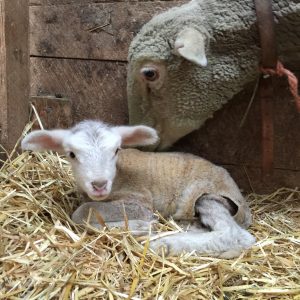 healthy.
healthy.
29 years later, I still believe that these qualities and skills are worth passing onto my girls. As a result, we’ve pulled the night shift for several years at local ranches. This gives the professionals a good night sleep, and ensures that the work ethic, character, and perspective gained from the sometimes messy cycle of life and death is passed onto another generation.
Just as we were getting settled into the barn on this night, we found an old ewe that had died, leaving her lamb without a food source or a mom to raise it. On the other side of the barn, Popsicles was born with weak front legs that wouldn’t bear his weight. Although he won my daughters’ hearts with his tenacious, but unsuccessful, attempts to walk on splinted legs, Popsicles’ mother was growing frustrated with his inability to eat and the accompanying discomfort from her milk-engorged udder. And she began to leave him behind. As his condition worsened, it became obvious that Popsicles would not make it through the night.
Those who look at life through the lens of experience in a lambing barn see this for the opportunity it is—to take a life that won’t last to save one that will. Putting an animal down is never easy, but in Popsicle’s case it was quick, merciful and essential to the survival of a healthy lamb.
After drying my eyes, I got to work with the knife immediately, knowing that lamb skin peels more readily from the bone structure, muscle and tissue when warm. Following an often-practiced cut sequence, Popsicles’ cape came cleanly from his body and was lying on a straw bale, ready to be used, in a matter of minutes.
My youngest daughter, Sydney, volunteered to hold the orphan lamb (#145) and assisted throughout the process of stretching Popsicles (#133) freshly skinned cape over the orphan’s head, around his legs and tail, then smoothing the wrinkles out along his back. A few adjustments were required to make the cape fit correctly, but soon little orphan lamb 145 was wearing a second set of skin emblazoned with the number 133, and was ready to meet his new mom.
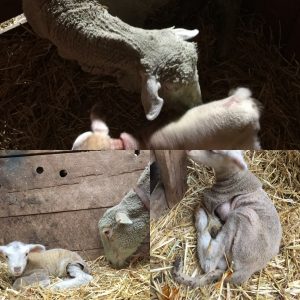 She, however, was less certain about the hyperactive, slightly traumatized, but fully healthy lamb that now shared her pen and was aggressively attempting to nurse. Skepticism from adoptive ewes is normal, but is addressed effectively by packing its nostrils with Vick’s VapoRub. This generally creates enough scent confusion for the ewe to allow the skin-grafted lamb the best chance for success, and again proved helpful in this case.
She, however, was less certain about the hyperactive, slightly traumatized, but fully healthy lamb that now shared her pen and was aggressively attempting to nurse. Skepticism from adoptive ewes is normal, but is addressed effectively by packing its nostrils with Vick’s VapoRub. This generally creates enough scent confusion for the ewe to allow the skin-grafted lamb the best chance for success, and again proved helpful in this case.
Throughout the night and in-between other lambing chores, we kept a watchful eye on the newly paired ewe and  lamb.
lamb.
When the sun peaked over the East Ridge, pushing away the cold and eating through the remaining black of night, it shed light on an actively nursing lamb and a successfully grafted pair. It was now up to the day shift to monitor ewe and lamb number 133 for a few days before cutting off the shrunken cape and turning the now inseparable pair loose with the rest of the herd.
As we left the lambing barn to head for home and a warm bed, an overwhelming sense of satisfaction came with us. We’d made decisions that some people may have found unacceptable. But we had done so with purpose and a modicum of skill using an old-school, time-tested ranching technique to save the life of a healthy lamb. Not bad for City Slickers!
Shane Klippenes is the husband to a woman he still wonders how he landed, father to 3 teenage daughters who are tougher than him, a Firefighter / Paramedic, outdoorsman, friend of ranching, author, speaker, and all-season explorer of Montana’s wilder places. www.blackleafwriting.com / Instagram @gffr35

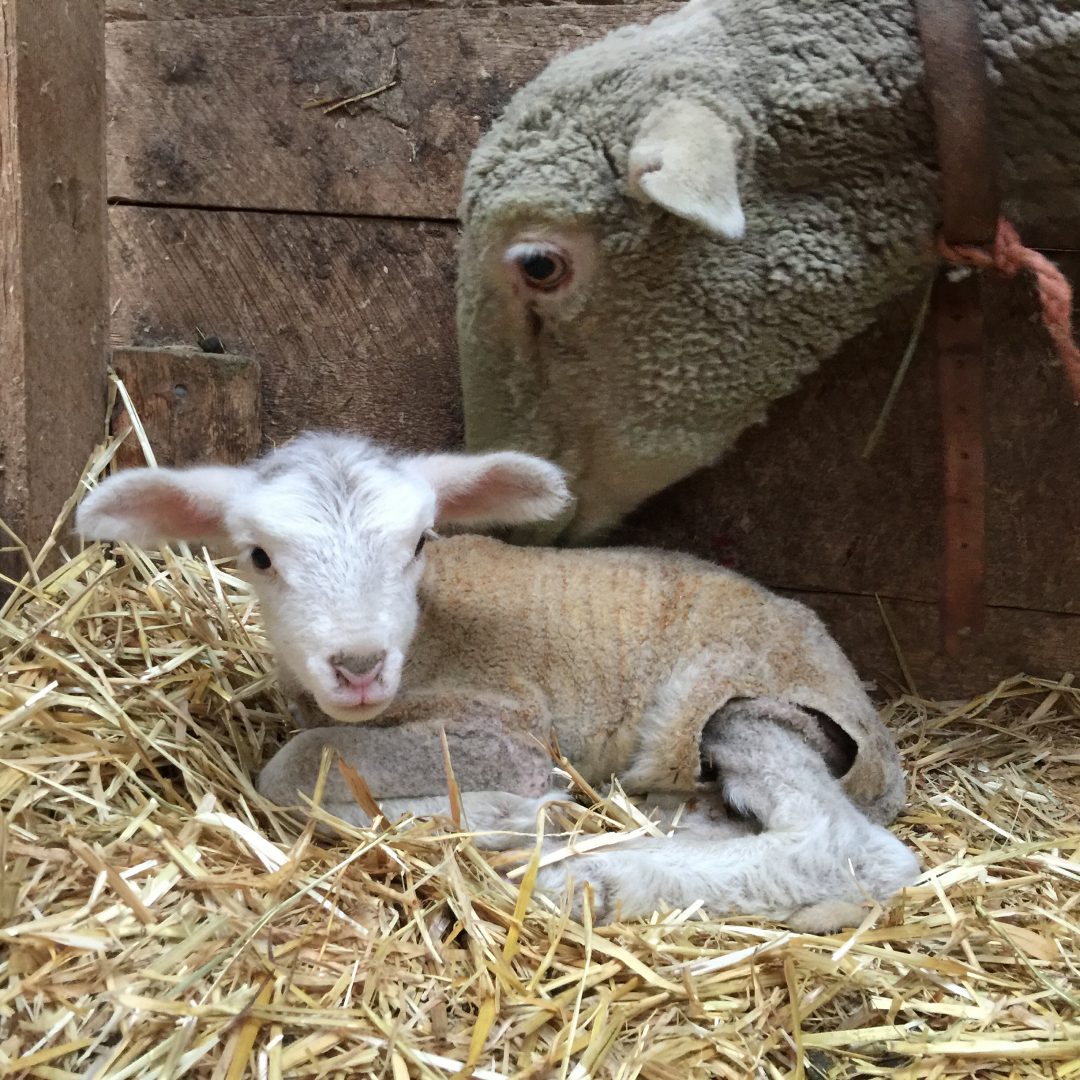
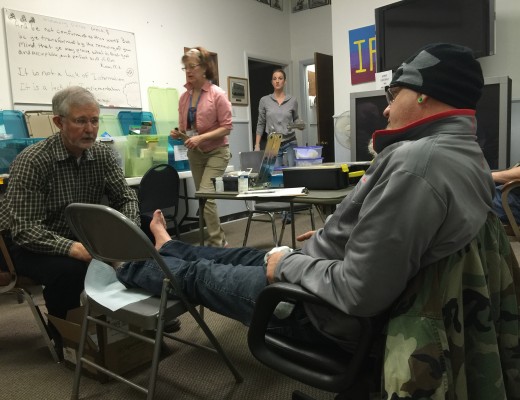

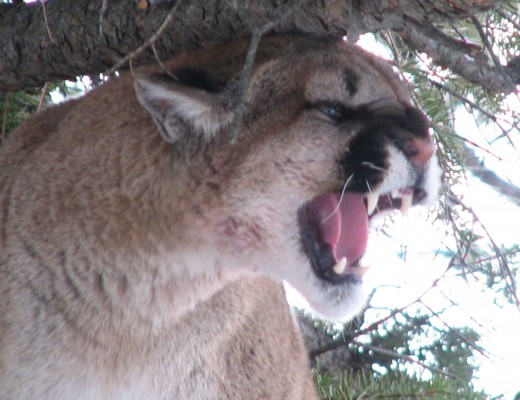
No Comments